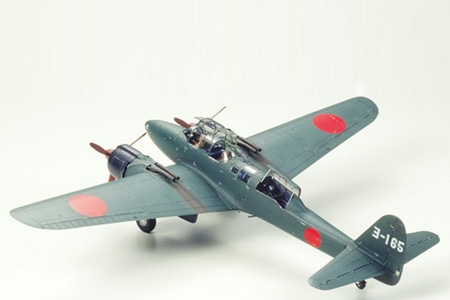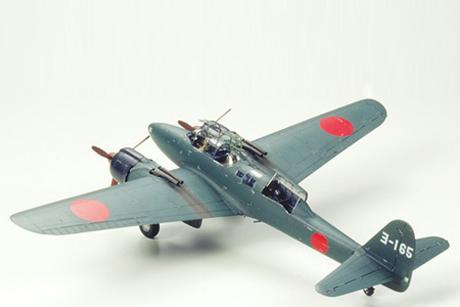Gekko Type 11 Early Production
-
Description
The story of the Gekko's development began when the Japanese Navy requested developent of a long-range fighter fast and maneuverable enough to oppose single-engine fighters. Nakajima proposed the Type 13-Shi Twin-Engine Land-Based Fighter (J1N1), which employed two 1000hp "Sakae" engines (same as Zero-Fighter engine) on its sturdy wings. Production was approved after the prototype was completed in March 1941, but in July 1942 its designation changed to Type 2 Land-Based Reconnaissance Aircraft. In May 1943, when the base of Rabaul in the Solomons came under the assault of noturnal raids from American B-17 bombers, a prototype equipped with two guns inclined to the front at a 30deg. angle was immediately deployed. During its first mission, the prototype downed two B-17. After reporting engagement results, many of the Type 2's were equipped with four 20mm oblique guns and re-designated as the Gekko (moonlight in Japanese) Type 11, and production of the new plane began. Unlike the late production model, these first night guns were employed for anti-ship missions and ground attack missions but as the role of the Gekko was anti-bomber missions, these lower guns were later eliminated and replaced with an additional upper oblique gun. The later production also featured an additional nose-mounted radar. Whereas early production Gekko were sent to many places in the Pacific, late production models were used to defend Japanese main land, mostly against B-29 heavy bombers.
-
Specifications
- Discontinued True


